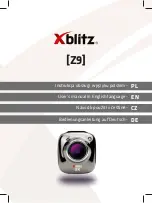
Support Email/ Skype: [email protected]
43
5.4.2.6 RTSP Setting
The user can set the RTSP port after entering RTSP Setting bar. In addition, the RTSP Authentication function can be closed.
Default value of RTSP port is: 554 Selection range: 554-65535
5.4.2.7 Onvif Setting
5.4.2.8 FTP Setting
Some general RTSP streaming media software can be
adopted to access video on the device, such as VLC.
Access links are as shown below:
The first bit stream: rtsp://user: password @IP:rtsp
port /live/ch0
The second bit stream: rtsp://user: password
@IP:rtsp port /live/ ch1
The third bit stream: rtsp://user: password @IP:rtsp
port /live/ ch2
Onvif is a global standard for the interface of IP-based security products.
The ONVIF specification will be ensure interoperability between products
regardless of manufacturer, allowing you to integrate your IP camera as a
generic ONVIF camera into existing security systems.
Enter Onvif Setting. The user can start up and calibrate Onvif functions.
The default setting for Onvif calibration is on.
NVR devices of some manufacturers do not support camera access with
Onvif calibration. The device supports Onvif versions 2.5 and below.
Enter FTP Setting interface. Fill out relevant FTP parameters according to the
set up example as shown in the figure below to achieve FTP document
delivery.
Server Address
: This field allows the user to designate an IP address or
DDNS address for the FTP server.
Server Port
: This field allows the user to designate the port number for the
FTP server.
User Name
: Input FTP user name.
Password
: Input FTP password.
Path
: This field allows the user to specify a save path. For
example: ./NCM751GA
Note:
If you want to save the alarm picture and video to FTP, you must build
an FTP sever, then create an FTP account with a password (not an
anonymous account) on your FTP server. The FTP account must have create
and delete file rights.
















































